I found an article titled OLD TIME SPANISH PICNIC in the September 23, 1878 edition of the Oakland Tribune, about a family picnic in Pleasanton, among members of the Bernal, Amador, Alviso and other Californio families. It fired my imagination. Imagine the stories, music, food, dancing. That led me down a little bit of a rabbit hole. Here's some interesting history for you.
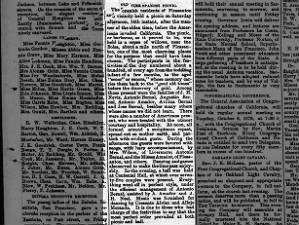 OLD TIME SPANISH PICNIC Mon, Sep 23, 1878 – Page 3 · Oakland Tribune (Oakland, California) · Newspapers.com
OLD TIME SPANISH PICNIC Mon, Sep 23, 1878 – Page 3 · Oakland Tribune (Oakland, California) · Newspapers.comOLD TIME SPANISH PICNIC.
The Spanish residents of Pleasanton and vicinity held a picnic on Saturday afternoon, 14th instant, after the manner of the olden time, before the Americans invaded California. The picnic, or barbecue, as it proved to be, was held in a copse of willows, [Sausal, in Spanish means "willow grove" - MF] near the Bolsa, about a mile north of Pleasanton, one of the most charming places for the purpose that could have been chosen. The participants in the festivities of the day numbered about a hundred, of every age from the toddling infant of a few months, to the aged "senor” or senora," whose memory carries them back to the “good old times” before the discovery of gold. Among those present were the families of J. H. Nevis, Antonio Bernal, Augustin Bernal, Antonio Amador, Avilina Bernal and Jose Bernal, besides many others whose names we did not learn. There were also a number of Americans present, who were treated with the utmost courtesy and hospitality. At noon, all formed around a sumptuous repast, spread ont on mother earth, and partook with evident gusto. During the afternoon the guests were favored with songs, with harp accompaniment, by Mrs. Wilson, of Livermore; Antonio Bernal, and the Misses Amador, of Pleasanton, and others. Dancing and games also served to make the time pass enjoyably. In the evening, a ball was held at Centennial Hall, at which over seventy-five couples were present. Everything went off in perfect style, under the efficient management of Antonio Bernal, assisted by A. Amador and J. H. Neal. Music was furnished for dancing by Cresento Alviso and Allejo Meranda. It is due to those who had charge of the festivities to say that the most perfect order prevailed at both picnic and ball.
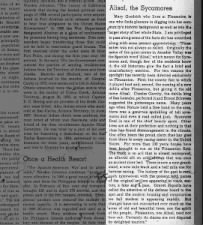 Alisal, the Sycamores Sun, Sep 7, 1941 – Page 15 · Oakland Tribune (Oakland, California) · Newspapers.com
Alisal, the Sycamores Sun, Sep 7, 1941 – Page 15 · Oakland Tribune (Oakland, California) · Newspapers.comAlisal, the Sycamores
Mary Goodrich who lives at Pleasanton is one who finds pleasure in digging into her community's historic background as well as into the larger story of her whole State. I am privileged to pass along some of the facts she has unearthed along with some present appreciations. "Pleasanton was not always so called. Originally the name of the quiet center in Amador Valley was the Spanish word 'Alisal,' which means the Sycamores and, though few of the residents know it, the old historians give the fact a brief and unsatisfactory mention. For two reasons the spotlight has recently been directed exclusively on Pleasanton. First, the county fair to which it played host and, second, the naming of a new dahlia after Pleasanton, but giving it the old name Alisal. Charles Garrity, the dahlia king of San Leandro, perfected it and Ernest Schween suggested the picturesque name. Many years ago when Nature held a free hand in the area, there was a generous sprinkling of tall sycamores and even a road called that. Sycamore Road is one of the chief beauty spots. Other trees are at their perfection and nothing in that class has found discouragement in the climate. One often hears the proud claim that hay goes from there to every racing center in the United States. For more than 100 years horses have been brought to run on the Pleasanton flats. The track is on soil that is almost waterproof, an alluvial silt on cobblestones that was once an ancient river bed. There is now a new grandstand, a new mile track and a half mile one for harness racing. The history of the past is curiously interwoven with the present with names of the original settlers appearing in roads, sectors, a lake and a pass. Gravel deposits have called the attention of the defense board to the spot and the modern housing and construction we call modern is appearing rapidly. But changes have not encroached over much on the areas of old and beautiful trees, nor the spirit of the people. Pleasanton, nee Alisal, need not bow out. Certainly its claims are not disputed by delighted tourists."
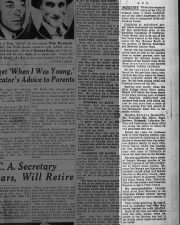 Bernal Horse trainer for many years trains CCCHA horses Fri, Apr 24, 1936 – Page 24 · Oakland Tribune (Oakland, California) · Newspapers.com
Bernal Horse trainer for many years trains CCCHA horses Fri, Apr 24, 1936 – Page 24 · Oakland Tribune (Oakland, California) · Newspapers.comINDUSTRY
Within the corporate limits of the City of Oakland today is being conducted one of the oldest businesses of the State - that of raising beef cattle and breaking horses.
Continuing an agricultural pursuit which maintained his forebears for four generations prior to the American occupation of California, Frank Bernal, said to be one of the best horse trainers in the State, operates the Roy Bronson Ranch at the junction of Skyline Boulevard and Redwood Canyon Road.
Bernal, who has trained horses for movie stars as well as for starring roles in animal pictures, now has contracts for training horses for members of the Contra Costa Horse Show Association and fanciers throughout Central California.
He has operated the Bronson Ranch for the past four years, coming from San Jose, where the Bernal family originally settled 160 years ago. He has been raising cattle and breaking horses all his life.
Starting next month, when the Mills College Horse Show opens, Bernal will follow the horse shows of the State, showing pure Arabians and American saddle-bred and standard-bred stock, with which last year he won more than a score of prizes, placing first and second at the Sacramento State Fair in the saddle division.
Stockton, Pomona, Sacramento, San Francisco, San Mateo, Santa Barbara, Richmond, Lafayette, Salinas and Pasatiempo at Santa Cruz are among the shows in which he will participate this year.
Bernal can trace his forebears back to three Spanish soldiers who were stationed in California in 1774. He also is descended from the extensive Higuera family of early California history, which was founded by five brothers in the Spanish army who came to California at about the same time as the Bernals.
His great-grandfather was a cousin of Joaquin Moraga, grantee of the Rancho Laguna de los Palos Colorados in Contra Costa County. Between the Bernals and Higueras his forebears owned Alisal and Salinas Ranchos in Monterey County, Agua Caliente Ranch in Alameda County and Santa Teresa, Pala, Tularcitos, Llano del Abrevadero and Pescadero Ranchos in Santa Clara County,
His great-grandfather virtually could travel from Monterey to the Carquinez Straits without leaving property owned by some member of
the family. Their herds, according to legend,
were so extensive that when they moved together the earth trembled.
Much of the land was kept intact until the early sixties, when the wealth of the families was lost in the drouth which wiped out most of the herds.
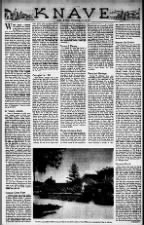 Knave - Bernal Sun, Nov 12, 1961 – 114 · Oakland Tribune (Oakland, California) · Newspapers.com
Knave - Bernal Sun, Nov 12, 1961 – 114 · Oakland Tribune (Oakland, California) · Newspapers.com
WHEN Claude L. Cameron of Oakland was a student a few years ago he studied the history of Rancho el Valle de San Jose in Southern Alameda County, one of California's largest land grants, and then developed his study into an A-grade thesis that won him the plaudits of his instructors. Claude Cameron's thesis was conveniently brought to our attention in view of today's color photo of the Walter S. Johnson home on Foothill Road between Dublin and Pleasanton, one of the few remaining Alameda County byways not too much affected by the swift changes brought about by modern freeways and speedways. Foothill Road is the old Fages Trail, explains Patricia Soito in her "Hundred Years of Pleasanton." She adds that this was the trail marked by the "sandalled feet of Father Serra, and the plodding hoofs of covered wagon oxen." Walter S. Johnson's colorful Golden Eagle Ranch home is none other than the restored adobe residence of Don Augustin Bernal who started building the adobe in 1848 and moved in two years later. It was Augustin Bernal who was given the land grant known as Rancho el Valle de San Jose. The home stands back on a hillside some distance from the highway. Its site is about midway between the Castlewood Country Club and the 1846 Francisco Alviso adobe that is now the Meadowlark Dairy. Although Walter Johnson remodeled the Bernal adobe it includes the original walls of the house that once provided shelter for Don Augustin's family. Don Augustin's original rancho grant included the present sites of the Phoebe Apperson Hearst Ranch and the Francisco Alviso adobe. "While the Hearst Ranch was to become a country club and golf course, and the Alviso adobe a part of a dairy, the Bernal Ranch lands were to become the town of Pleasanton," Cameron points out in his thesis.
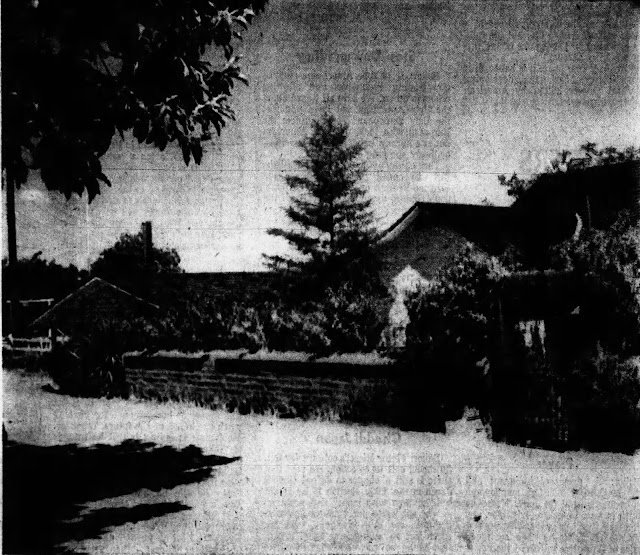
|
| It took two years (1849-1850) for Augustin Bernal to build this adobe on Foothill Road now occupied by Walter S. Johnson |
A Family Domain
"Prior to December of 1822 when Gen. Antonio Lopez de Santa Anna proclaimed Mexico a free republic," the Claude Cameron thesis reports, "only two Spanish land grants had been made in what is now Alameda County. Once the Mexican Republic was established, a colonization law was adopted which enabled the government to give grants in California ... In 1839 Augustin Bernal; his brother, Juan Bernal; his brothers-in-law, Antonio Maria Pico and Antonio Sunol petitioned Governor Alvarado of Alta California for a grant of land. Augustin had served the armies of both Spain and Mexico for more than 20 years ... This induced the governor to make the grant on April 10, 1839, and the legislature to approve it on May 22, 1840. It was the largest allowed under Mexican law, and the largest given in the area now known as Alameda County. It originally consisted of 64,000 acres, but was reduced to a little more than 48,000 acres in 1865 when patented under California law. Most of the land lost in 1865 was the share obtained by Antonio Sunol who had to give up much of his property in order to save the remainder from squatters ... Once the original grant was made Augustin Bernal his brothers and two sister's husbands received equal shares. Antonio Pico, who was married to Pilar Bernal, immediately sold his share to Antonio Sunol, who in turn sold to Juan Bernal in 1846. Pico then returned to San Jose and resided there until 1861 when President Lincoln appointed him Register of the United States Land Office in Los Angeles. He held the post one year, then returned to San Jose where he died in 1869. Except for brief trips to his wife's relatives he never returned to the land which Augustin Bernal had given him.
Joaquin Came First
"Antonio Sunol, the other brother-in-law of Augustin Bernal, was married to Maria Dolores Bernal," continues Cameron. "He was born in Barcelona, Spain, June 13, 1797. At the age of 8 a French admiral took him to France where he was educated. Instead of returning to Spain he became a sailor in the French navy and is reported to have been present at Napoleon's surrender at Waterloo. He reached California aboard the first French merchant ship to enter San Francisco Harbor. Here he deserted the ship and found his way to San Jose where he became a merchant. Antonio stayed in San Jose but a short time after his wife's death in 1845. When gold was discovered he went off to the gold fields. His share of the Rancho el Valle de San Jose was left behind for his son to occupy. It was his son who built a home of adobe in 1849 at an intersection of three crude roads. One of these roads led to what is today Sunol, another extended to ward what became Pleasanton, and the third wound through the hills toward Mission San Jose. The other two land recipients, Augustin and Juan Bernal, were sons of Joaquin Bernal who had been sent to California by the King of Spain to explore for mineral deposits. He arrived in 1795, found no minerals of value, and remained to serve as an army officer. In reward for his service he was allowed a land grant and selected the Santa Clara Valley site he called Santa Teresa Rancho. Here Augustin was born. The Bernal family held a position of prestige during Spanish rule in California, and were able to maintain this position under Mexican rule. They also must have been a hearty family because Joaquin Bernal lived to be 87 and his wife reached the age of 110 years.
Occupied in 1850
"Juan Bernal, younger son of this marital union, was born in San Francisco June 23, 1810. He grew up on his father's rancho and left to serve only a short time as a soldier. After this experience in the army he returned to Santa Teresa Rancho where he worked until 1852. In that year he moved his family to a newly constructed adobe on his share of the property obtained in the grant. Here he lived only a short distance from his brother's adobe and became a prosperous livestock producer. Joaquin Bernal's oldest son, Augustin, was born in 1795 at Rancho Santa Teresa. After spending his childhood and adolescent years there he entered the army and served as a soldier for 20 years, attaining the rank of an officer. That is what won him the land grant; the other recipients receiving shares due to being his relatives. Augustin was married twice and fathered seven children. His first wife, Donna Maria Higuera, died before Augustin moved to his adobe home on the Rancho el Valle de San Jose. During 1848, the same year that Donna Maria passed away, construction on the new home was begun, and due to the size of this structure it took two years to be completed. Despite the recent death of his wife, Augustin was not to have a home which lacked a woman's touch. Shortly after moving under its sheltering roof he took Francisca Soto as his second wife. Augustin's adobe home was not the first building on his property. Sometime between 1835 and 1839 (although he was not the legal owner of the land) he built an adobe to house an Indian overseer of livestock pastured in the valley ... Many travelers passed across the lands owned by Bernal between the year the grant was given and 1850 when he finally moved into his adobe home on the 'rancho. Among these travelers was Capt. John Charles Fremont of the United States Army who in 1846 camped at a site between what are today the towns of Sunol and Pleasanton.
Comments
Post a Comment